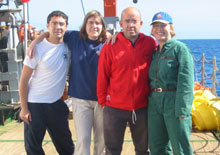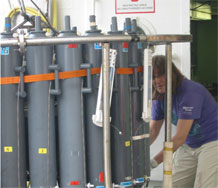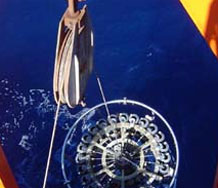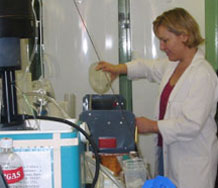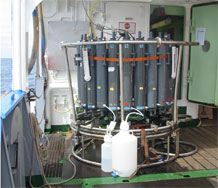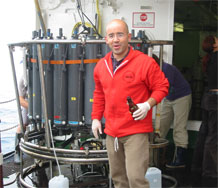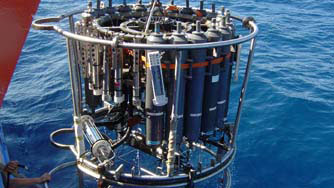
3. Poseidon: The Rosette
The rosette is a crucial piece of equipment on a research vessel. 20 bottles each 10 l volume are attached to a large aluminum frame. The whole rosette with the open bottles is then lowered via a conducting stainless steel wire by a winch. The frame contains an electronic device which can be controlled by the board computers, and scientist can send signals to the rosette to close a bottle at the depth where they want to take a water sample. Also, sensors measuring conductivity (a proxy for salinity), temperature and depth (so-called CTD) is attached to the lower part of the frame. The signals from the CTD are send to the lab computers via the conducting cable and give the scientists information about water column properties as the rosette moves through the water. With a water depth of 3600 m, it takes about 3 h for the rosette to make the journey down to the ocean floor and back up. As soon as the rosette is securely latched on deck, scientist start taking samples for different parameters, ranging from dissolved nutrients, oxygen and carbon dioxide, to samples for organisms. After samples are taken from the bottles on the rosette, the water samples are filtered and processed in the ship’s wet lab. This work is done in collaboration with colleagues from the Instituto Canario de Ciencias Marinas
(http://www.iccm.rcanaria.es/).
